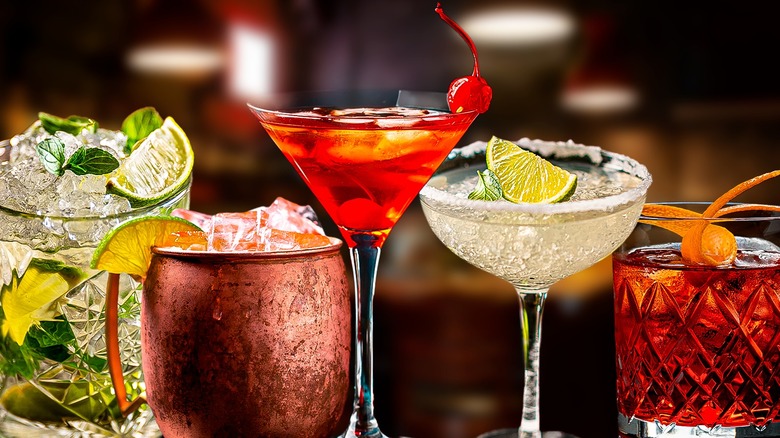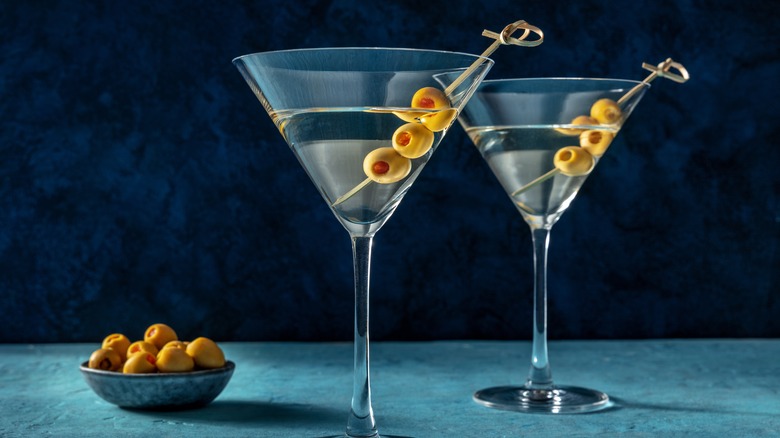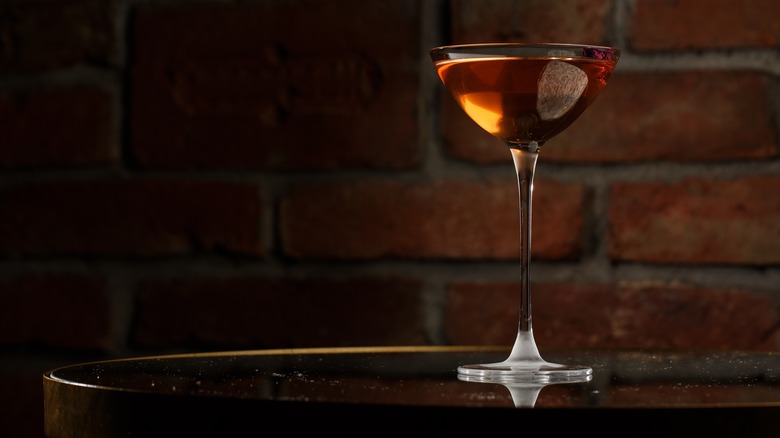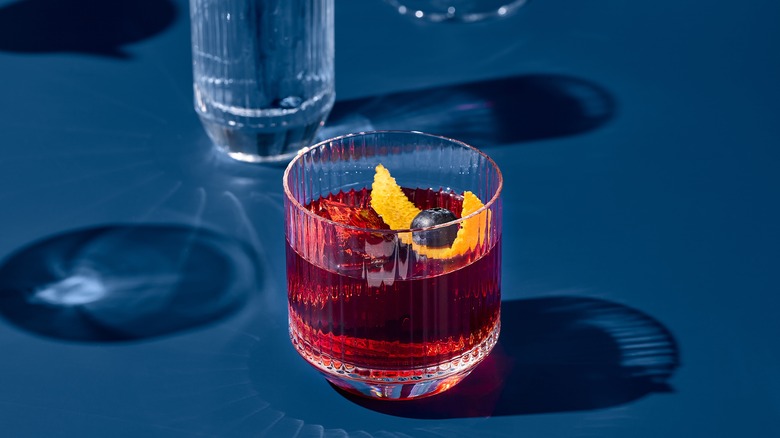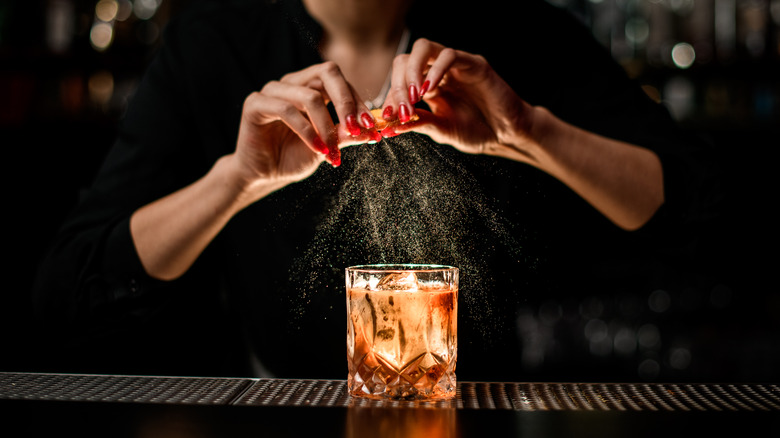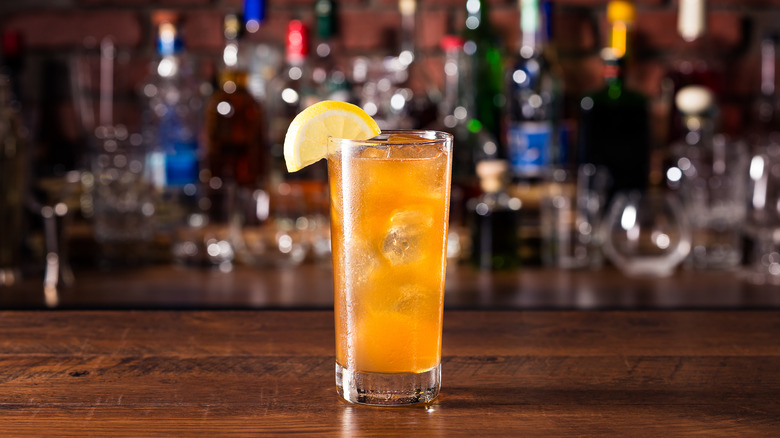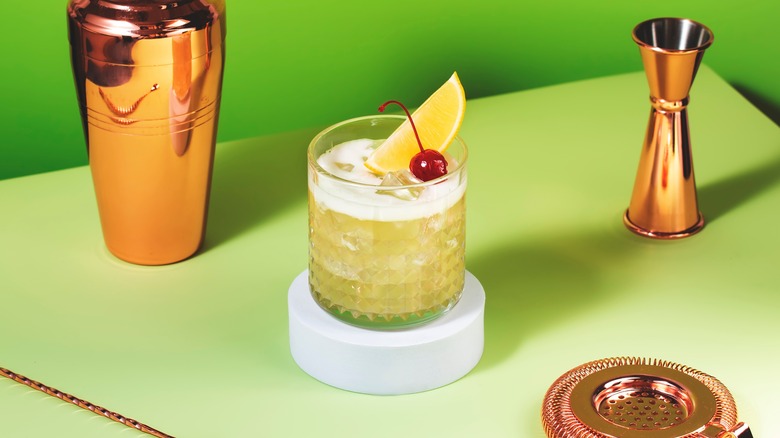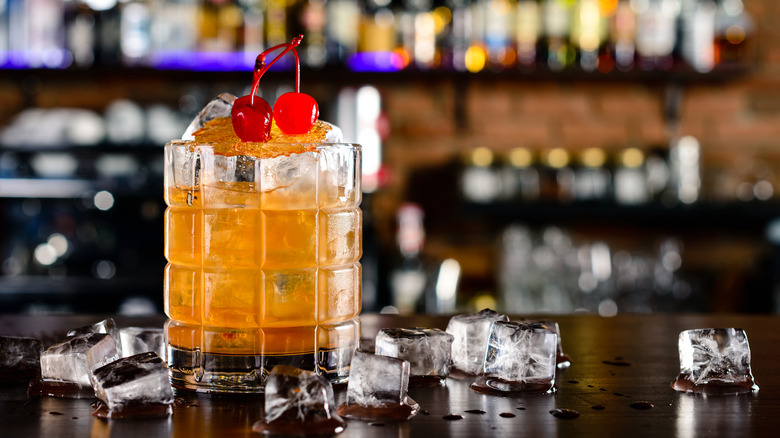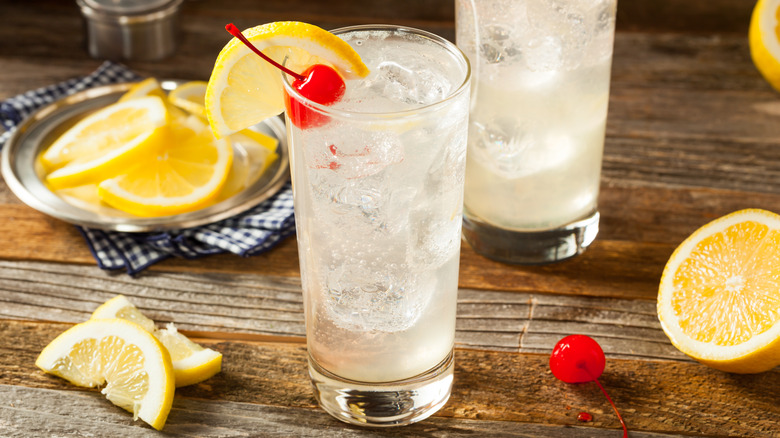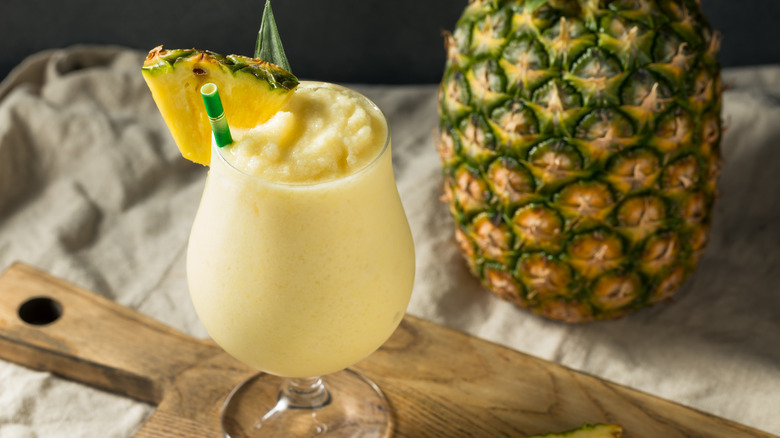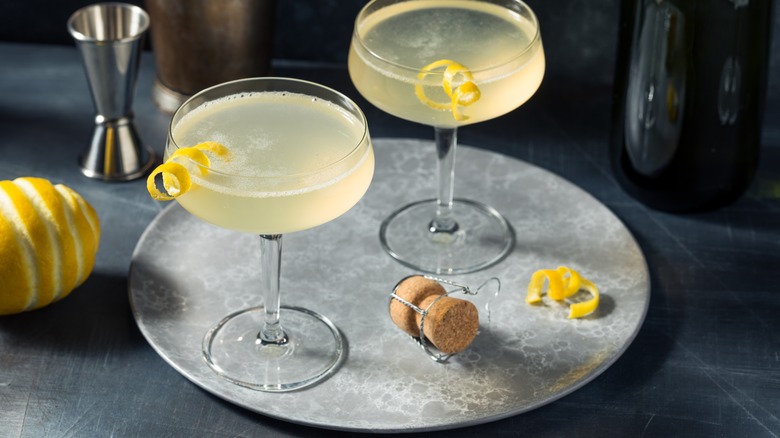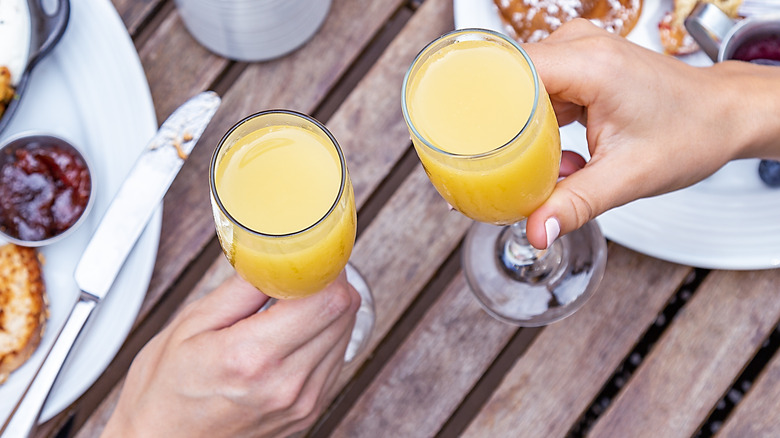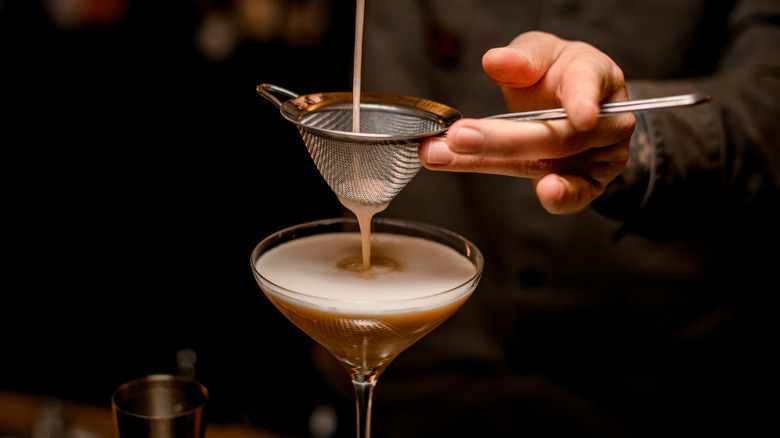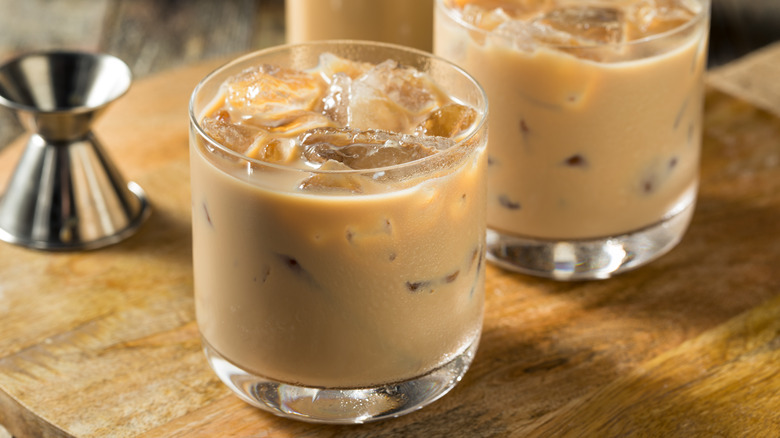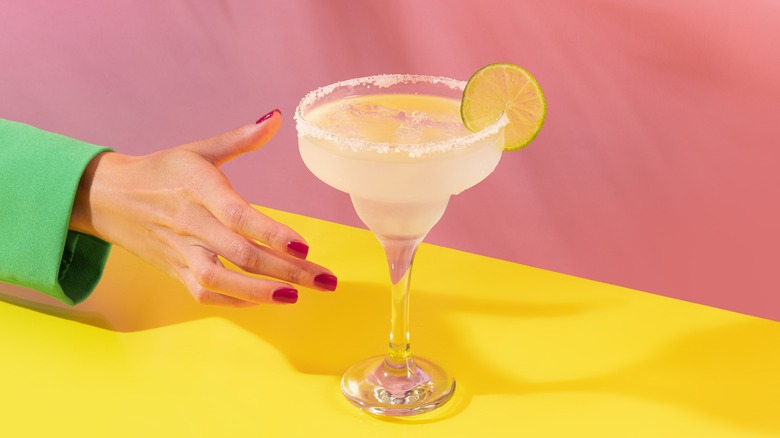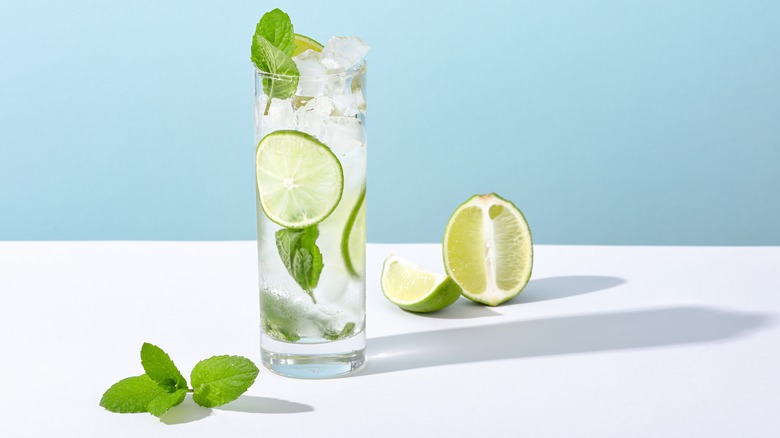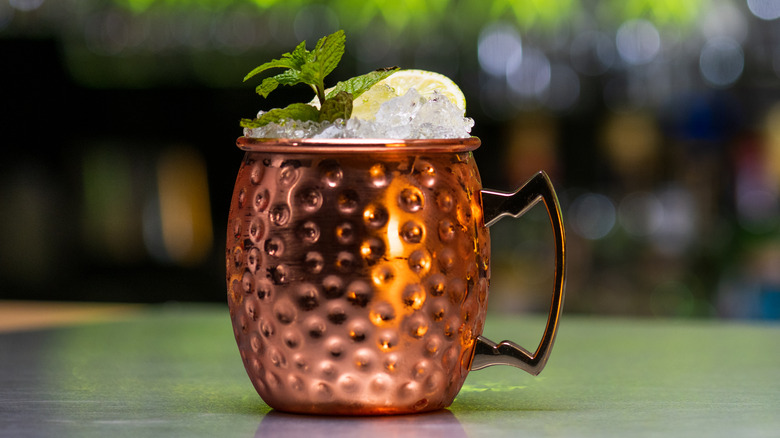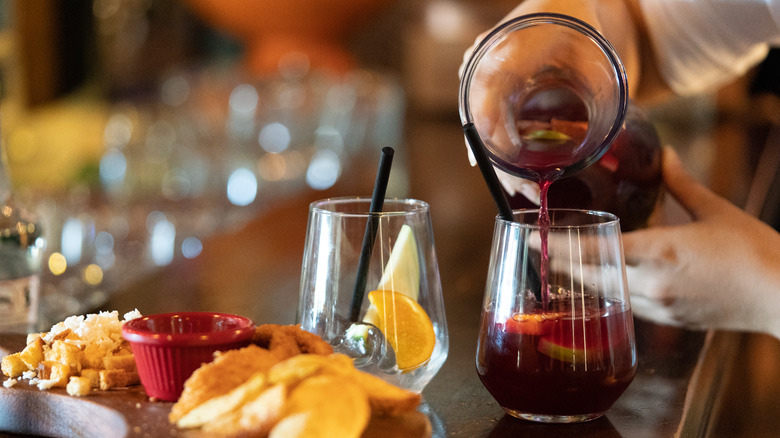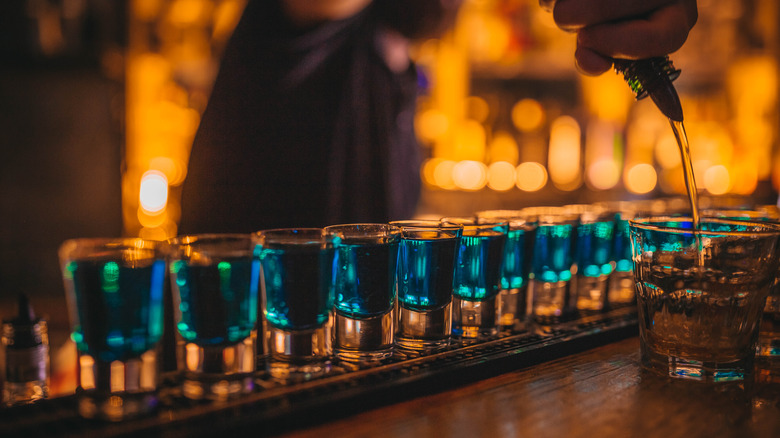18 Worst-Value Cocktails To Order, Ranked
When it comes to ensuring that you get good value for your drinks, it's best to consult a seasoned bartender. We spoke to Stephanie Ringwood, who began working in the food and beverage industry in high school, then started working front-of-house jobs and bartending in her early 20s. These days, she's mostly just teaching; she has taught at the ABC bartending school in NYC for over 16 years now, helping aspiring bartenders get their licenses and learn how to make a proper drink.
According to Ringwood, drinks are of poor value when there's a larger-than-normal markup. "Bars will usually want a 20% pour cost," Ringwood explained. "20% of the cost of the drink is what they spend to make it, and 80% of the price of the drink is profit. So if a drink costs the bar $3 to make, they will list it at $15 to hit the 20% pour cost."
On this list, the cocktails are being evaluated for cost versus value, while taking into account alcohol content and typical ingredient quality. Still, if you're in a bar where you see fresh, beautiful ingredients being used, Ringwood says you should absolutely order a cocktail off the menu, and not worry about the bill. She notes, "A well-made cocktail, balanced, prepared with skill, garnished correctly, in a great atmosphere — to me, it is worth it every time."
18. Classic martini
A classic martini is made with either gin or vodka. To make it, the bartender first prepares a martini glass by filling it with ice water so that it's cool when it's delivered to you. Next, they pour your liquor of choice and dry vermouth into a shaker with ice, and they use a long spoon to stir the liquids together with the ice so that they mix. Then, the drink is strained into the cold martini glass and garnished with an olive (or three). You can order your martini dry or extra dry, which means it'll have less dry vermouth in it.
Ringwood approves of ordering a classic martini (or a dry one, for that matter) in any bar because this drink is always going to be pretty uniform, no matter where you go to get it. "I mean, you can't really you can't really hide anything in [a martini]," she shared. "So it's a reliable thing to order." With that said, a martini will still be one of the most expensive drinks on any bar menu because it does contain pure alcohol.
17. Manhattan
"Same, same, same," Ringwood commented about ordering a classic Manhattan cocktail, remarking that this drink and the martini will always have about the same value. That's because the Manhattan is actually the cousin of the martini. The two drinks are made the exact same way: Two alcohols are poured into the shaker, and then stirred with ice to be cooled and combined. The difference is which alcohols are involved.
In a martini, you use vodka or gin and then a touch of dry vermouth; meanwhile, in a Manhattan, you swap the clear alcohol for whiskey, and the dry vermouth for sweet. The resulting liquid is a dark, bloody hue. Since the Manhattan is also made with just two alcohols and without a mixer, it's pretty hard for a bartender to mess it up, which means its value is less likely to vary. Similar to a martini, however, the nature of this drink means that it will be an expensive purchase, and unless you really love ordering a Manhattan, you could get the same amount of alcohol in a shot for a cheaper price, or a more fun cocktail for a similar price.
16. Negroni
"The Negroni is, I would say, one of the most popular cocktails you see in New York right now," Ringwood said, citing its evergreen presence on classy bar menus. This Italian drink is made with Campari, a bitter Italian liqueur flavored with herbs and spices, and sweet vermouth, which gives the drink its brilliant red color. Custom says that it must be stirred rather than shaken, and then strained into your glass with an orange garnish.
About the Negroni, Ringwood said, "They're pure alcohol. There's no mixer in those." That means that the quality is always pretty much consistent, no matter where you go. And though there are different Negroni variations you can order, requesting a standard Negroni means you're paying for what you're getting, and not in a cost-effective way, like the Manhattan or martini.
15. Old Fashioned
"The Old Fashioned is one drink that you see on almost every cocktail list," Ringwood explained. It's an easy one for bars to slide onto their menu. She explained, "Most bars have the ingredients on hand already for other drinks." That's because an Old Fashioned is simply made from whiskey, bitters, and sugar. This drink, when prepared in the classic way, is made by muddling your sugar with bitters and water, and then mixing it with whiskey.
The long list of steps here means that bars can charge more for the preparation of the drink since most drinks don't need muddling. However, there are ways for bars to cut corners, like using ready-made syrup rather than going through the muddling process. Ringwood said, "It is a drink that everyone loves, but is easily one of the most profitable drinks for a bar."
14. Long Island Iced Tea
"If you're only looking for the amount of alcohol versus the amount of money that you're paying... a Long Island does have a lot of alcohol," Ringwood said. That usually means that these Frankenstein drinks, which combine half a shot's worth of five different types of alcohol, end up costing more than your average drink at a bar.
The Long Island Iced Tea is made from vodka, gin, rum, tequila, triple sec, and a few mixers, which are only included in the mix to make it harder to taste all that liquor. If nothing else, a Long Island makes for a good time. Ringwood doesn't think that it's the best value drink, because usually it's made with pre-mixed ingredients, but it's still powerful and effective. Should you order a Long Island, according to Ringwood? "It depends on what the goal of your evening is," she said. We'll leave it at that.
13. Whiskey Sour
When you see the word "sour" in the name of a drink, that means that it's made with a mixture of lemon juice, simple syrup, and egg whites, which are used to create a foam when the drink is shaken. Not all sour mixes are created equal, however; some are made with all fresh ingredients to order, while others are mass-produced and tapped on the soda gun for easy access.
Ringwood doesn't think it's worth it to drink a whiskey sour made with a mix. "[If it's made] using a concentrate — a pre-made, artificial sour mix — it's probably not the best drink in the world. You would see those more at clubs and college bars."
How can you tell if a bar is using pre-made sour mix? Ringwood has a trick, "What I usually do is sit at the bar off and ask for a glass of water or club soda, 15 to 20 minutes before I order a cocktail." That way, she can observe the bartender's method, and make her own call about whether to risk ordering a whiskey sour.
12. Harvey Wallbanger
The ABC Bartending School's signature drink is the Harvey Wallbanger, a more complicated version of a screwdriver, made with vodka, orange juice, and a float (or a thin layer), of the cherry liqueur Galliano on top. Ringwood laughed about the Harvey Wallbanger. "That's just a classic, that's old-school," she told Tasting Table. "You don't see that [very] often. Most bars don't carry Galliano any longer."
Even if it was most popular in the days of disco, the Wallbanger still can be a good value drink to order. "If it's fresh orange juice, it can be delicious," Ringwood said. However, as with most recipes, if the bar isn't using fresh juice, this vintage drink isn't going to taste its best — and its value will be diminished because of that.
11. Tom Collins
The Tom Collins is a super-refreshing drink. Made with gin, lemon juice, and club soda, and traditionally topped with a delightful mixture of maraschino cherries and orange slices, this drink is usually offered as a special during the summer months.
Ringwood said, "I've worked at a couple of places where we made [a Tom Collins] with fresh lemon juice, fresh egg white, and simple syrup, and when you shook it, it was foamy and frothy, and people loved it." But unfortunately, not every place has the same resources to create a delicious Collins, "I've also worked at places where they have sour mix on the gun. It was probably not the best product." This is another drink where you're going to want to watch how they're making it before ordering.
10. Frozen Piña Colada
The most refreshing drink on a hot summer day is the coldest drink on offer, of course. But how good are frozen drinks when it comes to value?
Ringwood's answer is that it's hard to know. Many bars give a lot of care to their frozen cocktails, painstakingly sourcing the ingredients that make it into the machine; yet that's not always the case, especially if the bar has to mass-produce its frozen cocktails for big crowds. "Sometimes you come across a place that is using artificial flavoring, or not a lot of alcohol," Ringwood warns. The markup on frozen drinks is also pretty staggering, especially given that bartenders have to do very little to serve them. So you might get more bang for your buck if you don't opt for that frozen piña colada.
9. French 75
A French 75 is a cute little classic cocktail that was probably originally named after a French 75-millimeter gun. Despite its potentially-dark history, the drink itself is very light and often served at brunch. These days, it's usually made with gin, Champagne, lemon, and simple syrup.
Because of the Champagne in the recipe, the French 75 gets what Ringwood calls the wine markup. She explained, "Wine has very little prep. Open the bottle, let them taste, pour... most wine will be marked up 300% of what they paid for it." That means a $20 bottle from a wine store can cost anywhere from $60 to $80 to order in a bar.
When it comes to the French 75, that means that each of these ingredients is getting a significant markup. "You're paying for the Champagne, you're paying for the ingredients... it's, you know, it's one of those that is probably going to get a big markup," Ringwood concluded.
8. Mimosa
Ringwood said that mimosas are one of the most popular drinks to order, especially in the morning, noting, "You see these on every brunch menu." That's because mimosas are refreshing and not super alcoholic, which makes them the perfect casual drink to pair with your eggs Benedict. They're made with sparking wine (often Prosecco) and orange juice, which combine to create a glittery, fun beverage that almost just tastes like carbonated OJ.
The bad news when it comes to mimosas is that they also get the wine markup, and since they're so popular, bars know that they can give whatever price they want and still have plenty of people ordering the drink. Ordering a bunch of mimosas for the table is a disaster when it comes to the drink value, according to Ringwood. She offered up a money-saving hack instead, "You might be better off ordering a bottle of Prosecco for the table and one glass of OJ."
7. Espresso martini
"The espresso martini is extremely popular in the last couple years," Ringwood said. This drink is made in different ways depending on the bar — at some places, they have an actual espresso machine, while in others, there's a pot of coffee chilling in a fridge somewhere. Even the ingredients change: Bartenders add liqueurs like Kahlua, Baileys, or Creme de Cacao to elevate their espresso martinis, and some even swap out the classic vodka for a more flavorful hard liquor, like rum or whiskey.
The espresso martini's popularity has made bars go to lengths to make this complex drink more readily available. "I've gone to a lot of places that have it pre-batched on tap," Ringwood said. "All they do is just pour from the tap, shake it on ice, and strain it into a martini glass, so you're really cutting down on a lot of the prep there. Because of the popularity, it can be a big markup."
6. Cream drinks
Cream-based drinks, like a Mudslide or a White Russian, can vary widely in quality depending on what type of cream is used to make them. Most bars will only have one type of cream in the fridge — half and half is a popular choice because it's cheap and will keep the longest, but isn't always the cream that the drinks were intended to be made with.
Most cream drinks are very sweet, which is another thing that Ringwood will dock points for. "Oh, well, I would say don't have too many of those, to begin with," Ringwood laughed. "Maybe for dessert. it just sounds like a stomachache."
Also, these drinks usually are shaken so that the cream creates a foam on the top of the drink, and they involve many ingredients that aren't typically hard liquor. That means you're paying for prep and ingredients without getting a lot of alcohol in return — which further lessens their value.
5. Margarita
"I do enjoy a well-made, fresh-juiced, nicely-shaken marg," said Ringwood. But not all are made equal. In fact, Ringwood told us, "Margaritas you can mess up very easily."
That's because the margarita is another drink that can change a lot depending on what you choose to use in it. A classic marg only has three ingredients: tequila, triple sec, and fresh lime juice. Some bars, however, simply combine the tequila with a premade mix that includes juice from concentrate and a variety of artificial ingredients. A better bet in terms of quality is to order a Cadillac margarita, which is made with upgraded ingredients (swap tequila reposado for well tequila, and Grand Marnier for triple sec). It will cost you more but will be of a higher quality.
4. Mojito
"Usually drinks with brand-name liquors, lots of ingredients, and more steps to make are more expensive," Ringwood shared. That's also word-for-word how you would describe a mojito. Mojitos are rum-based drinks that require a whole lot of work on the bartender's part. This recipe calls for mint syrup, which bartenders must make by muddling mint leaves with sugar and water. Mint syrup can also be pre-made, of course, but the good mojitos (made by the good bartenders), are going to rely on fresh mint to make this tasty drink feel as fresh as possible.
After muddling, the bartenders add the mint syrup (along with more fresh mint leaves) to a mixture of rum, club soda, and lime juice. This drink-making process is time-consuming, and you're going to have to pay for that time, as the consumer. Plus, if the bartenders take any shortcuts, that means a less fresh drink.
3. Moscow Mule
The relative value of Moscow mules is determined by the same principle as the mojitos: More specialized ingredients and more steps make your drink more expensive. Bars serving mules need to specifically buy ginger beer just for this one cocktail because the ingredient is rarely used in other drinks. The classic recipe also calls for lime juice, which you can't use a sour mix for. On top of all that, the drink is typically served in copper mugs — which constitute an additional overhead cost for the bar, and make the preparation of this drink more complicated for bartenders.
Ringwood also pointed out that the popularity of the mule means that bars will set the price of this drink at whatever the public is willing to pay, rather than a typical 20% pour cost. "If you want to add a Moscow Mule to your menu, but the cost of limes goes up, the price of the cocktail will go up," she said. "Also, if it does well at that price, when the price of limes goes down, they might not change the price to reflect that."
2. Sangria
Sangria is a drink that's usually served en masse. It's made with red wine and a mix of juices and fruit, and the recipe varies from bar to bar. It's also a popular choice in restaurants. Because it's ordered for the table and made in large quantities, the drink itself actually ends up having a very low value.
"Sangria is one of those [drinks] that are really profitable for a bar," Ringwood said. "It's kind of like the same as a wine — it has a high markup, and they can add a lot of juice, they can add club soda, 7 up..." With all those optional ingredients watering the drink down, you might not end up getting that much alcohol in your sangria; and to make matters worse, if those ingredients aren't fresh, then the drink might not even taste that good. Add the wine markup onto all that, and you can see why sangria is this low on the list.
1. Shooters
Ringwood told us that she's not entirely against shooters, which are shots of liquor with added mixers, shaken and poured into shot glasses. "If you're out and you want to have a great time, and you're with a bunch of friends, and you guys want to do a round of shots, you can always just be like, 'Up to you,' to the bartender, and let them do something for you," she said.
However, the value of having yourself a green tea shot or a red-headed slut shot (yes, that's a real drink name) is much lower than a real drink. You're paying for the liquor, the mixer, and the preparation, but you're not getting a whole cocktail. Instead, you're getting a drink that you're barely even going to taste.
Ringwood warns, "If you're looking for the highest value shot, do straight liquor. Do a shot of tequila. You're not sipping on it, you're not savoring it; you're throwing it back, you're probably gonna chase it. You don't need to spend a lot of money on a brand name."
